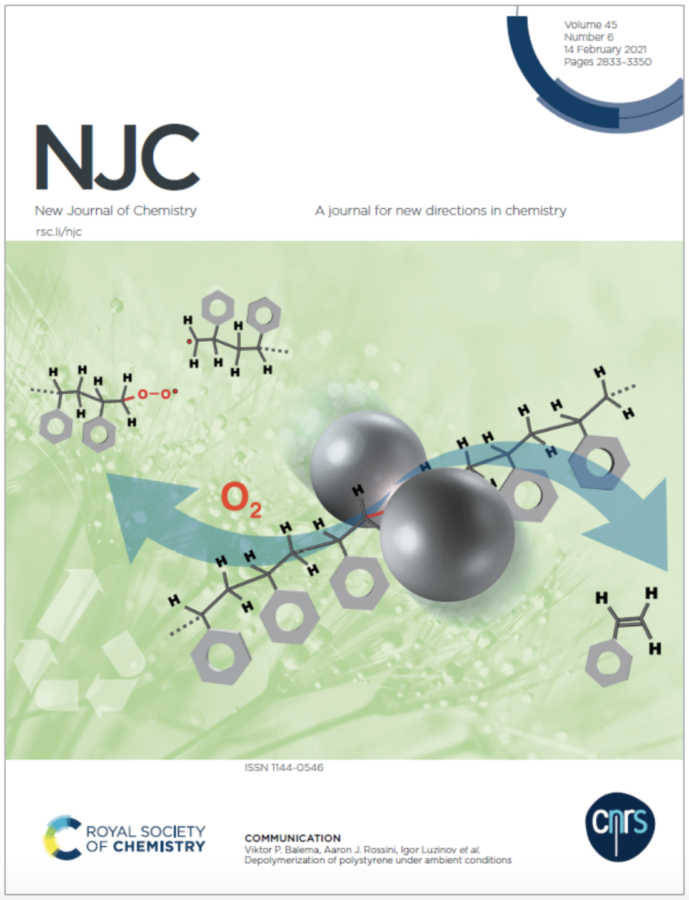Ames Laboratory discovers breakthrough in breakdown of plastic
February’s issue of the New Journal of Chemistry featured an illustration of the Ames research team’s work.
April 26, 2021
Sometimes the best way to solve a problem is to break it down into manageable pieces.
Scientists at Ames Laboratory collaborated with Clemson University researchers to solve one of the biggest environmental problems of today ー the excessive buildup of plastic waste.
“Plastic waste is a major problem, particularly in developed countries,” Viktor Balema, senior scientist at the Ames Laboratory, said. “We wanted our research to focus on this issue, particularly with polystyrene.”
Polystyrene is a standard plastic used in cooking materials, packaging and other situations. The material’s durability and quality make it a desirable substance for these purposes.
However, polystyrene’s greatest strength has been its greatest downfall.
“Polystyrene doesn’t easily degrade because it is designed that way,” Balema said. “The substance is very stable and does not fall apart under most circumstances.”
The durability of plastic creates a very challenging disposal problem. Like other plastics, polystyrene builds up quickly in landfills and requires excessive amounts of time to decompose. It is frequently burned as an alternative, releasing carbon dioxide and harmful gases.
A third possible solution is recycling. However, according to Ames Laboratory’s coverage article, “recycling of the vast majority of plastics is not economically feasible.” The reproduced plastic is “inferior” to the original material, while “sorting and separation are time and labor intensive.”
Balema and his colleagues hoped to solve this problem through their research, and through their published article in mid-February, their findings point toward a promising future. The team tested an experimental process, ball milling, to break down polystyrene.
“[Ball milling] is a rather simple process, although it is not as simple as it seems,” Balema said. “The execution of the chemical reaction is similar to other reactions where you take the substance, dissolve it in a liquid and then add the material, temperature or condition change.”
Balema continued, “With ball milling, you take two substances combined into a mill. You add ceramic or polymer balls into the combined liquid and shake or rotate the container to mill it.”
The process could effectively solve the growing waste buildup problem. In their research, the scientists effectively broke down the plastic into a manageable byproduct. However, even more exciting was the potential for recycling.
“The ball milling process significantly reduces hazardous waste during the breakdown process,” Balema said. “It also has an impact on recycling. Ball milling takes the long chain of the plastic and breaks it down into original small molecules. We can then convert the polymer into another material that is still very useful.”
Balema’s team featured polystyrene expert Igor Luzinov from Clemson University. Luzinov’s extensive background, combined with the team’s knowledge of the ball milling procedure, made the discovery possible.
Balema is also happy to report the article’s success. “Depolymerization of polystyrene under ambient conditions” was featured in the New Journal of Chemistry’s February 2021 issue with front-page illustrations. The academic findings were translated into many languages and published on websites for global researchers.
The ultimate goal from this group of researchers — these encouraging results can break down the plastic waste crisis, one piece at a time.

















